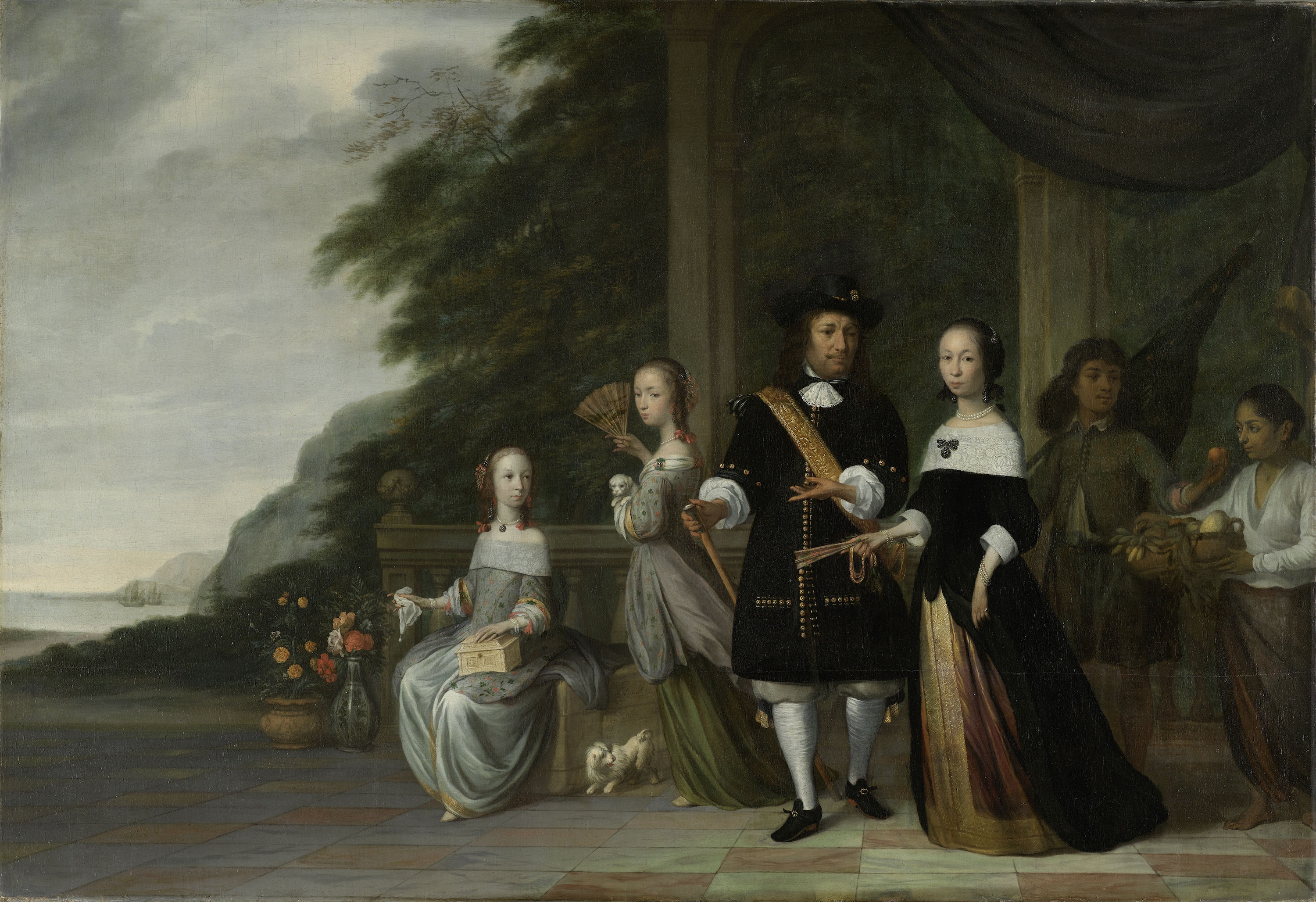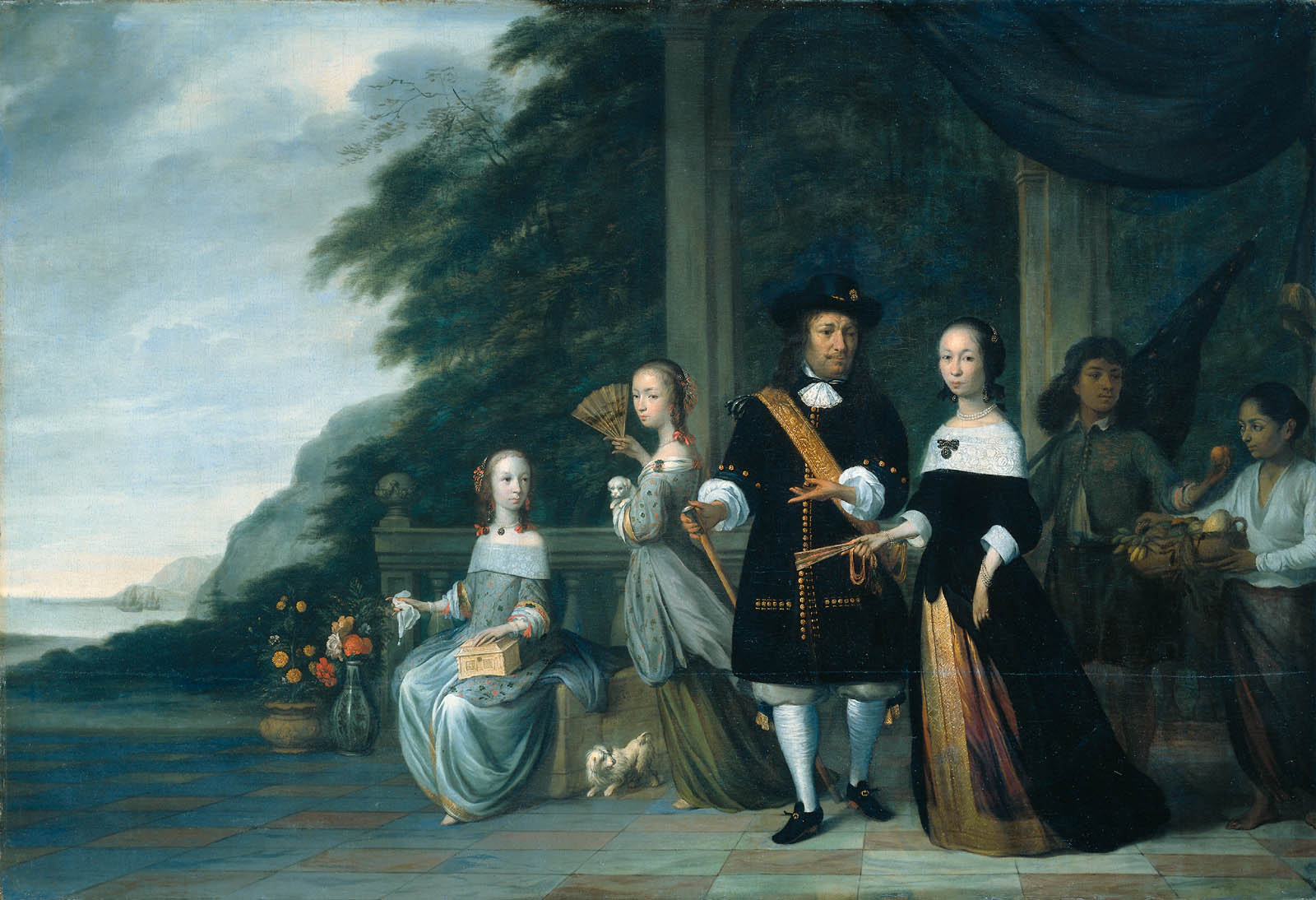A very important exhibition is taking place now at the Rijksmuseum in Amsterdam, entitled Slavery. Ten True Stories. In this exhibition, the museum focuses for the first time on slavery in the Dutch colonial period. This era (spanning 250 years) is an integral part of the history of the Netherlands. It was a time when people were reduced to property, to objects, to items in the accounts. The exhibition tells ten true stories from people who were involved in slavery in one way or another.
Today we want to tell you about Surapati.
An enormous 17th-century family portrait in the Rijksmuseum includes a young man with black curly hair that falls loosely over his shoulders. He wears pleated knee breeches, a light shirt, and an open jacket. A banner rests on his right shoulder. His feet are not visible, but he is probably not wearing shoes, like the woman beside him. She gives him an arch look as he takes a piece of fruit from her basket. His gaze is averted from the viewer. He is not the first figure that stands out in the painting; as an enslaved servant, he stands in the shadow of a luxuriously attired family. Yet this boy is not just anyone. He is most probably Surapati, a National Hero of Indonesia, famed for his struggle against the Dutch in the 17th century. His name inspired some to the greatest of deeds and filled others with fear.
Surapati was an enslaved Balinese man in the service of a Dutchman in Batavia and later succeeded in escaping slavery. He became the leader of a group of fugitive Balinese people and initially fought for the Dutch East India Company (VOC) but eventually against it. Ultimately, he became the ruler of an area of East Java, where he died of wounds sustained during a battle with the VOC.
Jacob Coeman painted the group portrait of senior merchant Pieter Cnoll, his wife, Cornelia van Nijenrode, and their two daughters Catharina and Hester, in Batavia in 1665. Surapati must have been one of the family’s many enslaved servants, but the fact that he is featured in the family portrait says something about his prominent position in the household. Moreover, he carries Cnoll’s banner, a task exclusive to the most important servants. According to the Javanese writings, Surapati was the son of a ruler who ended up in the hands of a Dutchman, who took him to Batavia, where he resided as an enslaved servant in the Dutchman’s household. (This period of slavery is missing from the West Javanese Babad.) The daughter of the Dutchman subsequently fell in love with Surapati, and according to most writings he had an affair with her; only in the Balambangan babad does he reject her advances. Eventually he left Batavia, by fleeing, according to some, and simply of his own free will according to others.
We share today's story thanks to the Rijksmuseum.
P.S. White subjects have dominated the Western art tradition for millennia, while people of color have been vastly underrepresented and misrepresented. There were however some exceptions. Read here about the amazing portrait of the African King Caspar.


 Jacob Coeman
Jacob Coeman